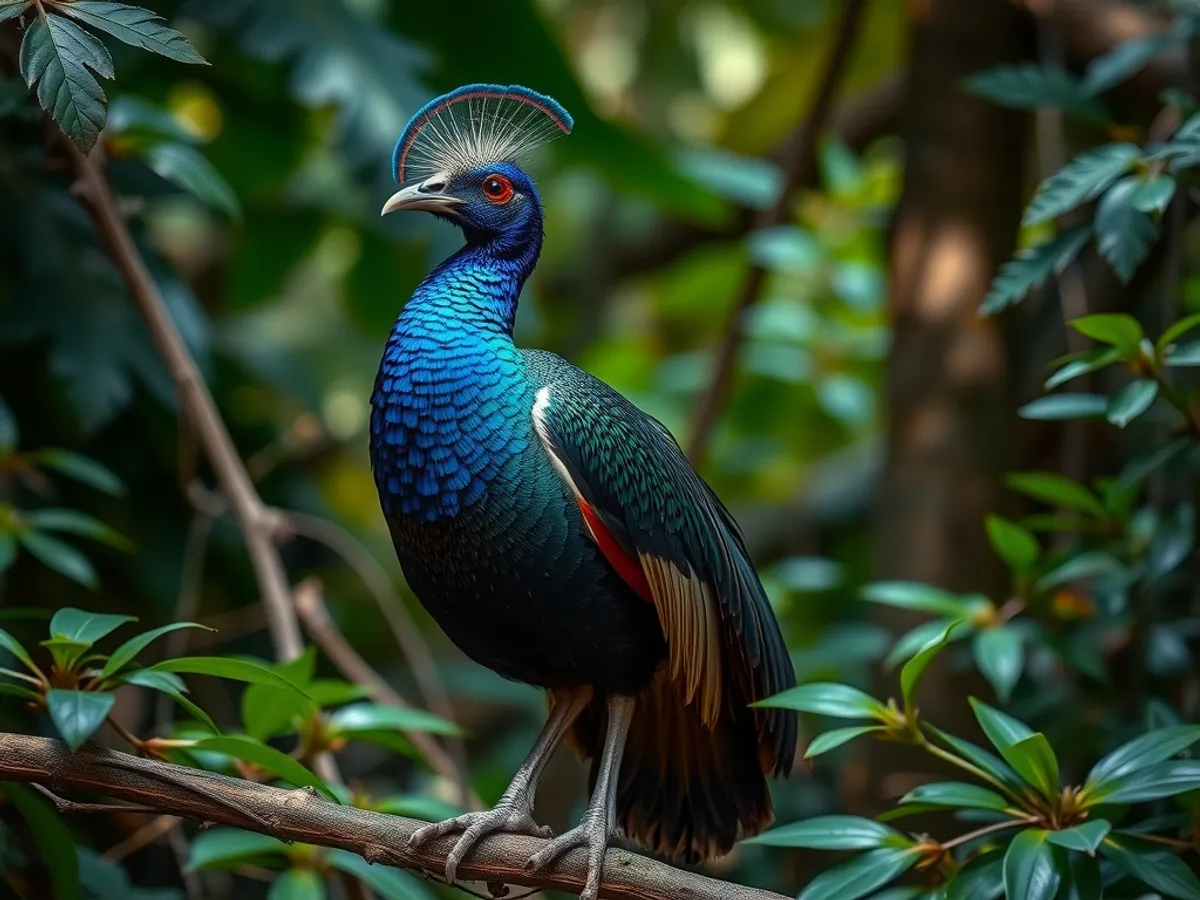
Malayan Peacock-pheasant
Polyplectron malacense
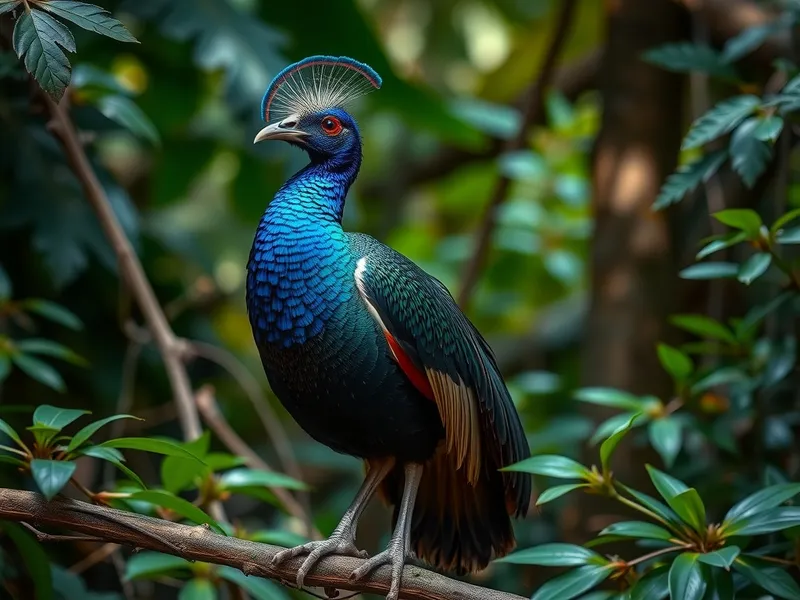
Meet the Malayan Peacock-pheasant
The Malayan Peacock-pheasant is a small, elusive bird endemic to the lowland forests of the Malay Peninsula. Its plumage is beautifully adorned with iridescent blue-green eye-spots, especially prominent on the upperparts and tail, which it fans during courtship displays. Males are slightly larger and more colorful than females, using their ornate feathers and intricate dances to attract mates. This species is known for its secretive behavior, often remaining hidden in dense undergrowth, and is rarely seen in the wild.
Classification
Bird
Habitat
Lowland tropical rainforest
Diet
Omnivore
Lifespan
10-15 years
Conservation
Endangered
Weight
0.5-0.7 kg
📖Fascinating Facts
Spectacular Plumage
The Malayan Peacock-pheasant features stunning iridescent blue-green eye-spots on its feathers, used for display during courtship.
Forest Specialist
This species is strictly dependent on lowland dipterocarp rainforests, making it highly vulnerable to habitat loss from deforestation.
Solitary Nester
Females lay only 1-2 eggs per clutch and raise the chicks alone, increasing the species' vulnerability to threats.
📋Detailed Description
The Malayan Peacock-pheasant (Polyplectron malacense) is a medium-sized, sexually dimorphic galliform bird, measuring approximately 50–63 cm in length, with males generally larger than females. The male is distinguished by its ornate plumage: a dark brown body adorned with numerous iridescent blue-green ocelli ('eye-spots') on the upperwing coverts and tail feathers, a short bushy crest, and a bare blue facial patch bordered by white. Females are smaller, duller, and lack the prominent ocelli and crest, providing camouflage in the dense forest understory. Both sexes have relatively short, rounded wings and strong legs adapted for terrestrial locomotion. The species is highly secretive and cryptic, spending most of its time foraging on the forest floor amidst thick leaf litter. Its vocalizations are low, resonant booming calls, often heard at dawn and dusk, which play a role in territory establishment and mate attraction. The Malayan Peacock-pheasant is solitary or found in pairs, with a home range that is fiercely defended by males. Its diet is omnivorous, consisting of seeds, fruits, small invertebrates, and occasionally small vertebrates. The species exhibits elaborate courtship displays, with males fanning their tails and spreading their wings to showcase their eye-spots in a ritualized dance. Adapted to the humid lowland dipterocarp forests of the Malay Peninsula, this bird is highly sensitive to habitat disturbance and fragmentation.
💡 Did you know?
The Malayan Peacock-pheasant is so elusive that it was once thought to be extinct in parts of its range until camera traps rediscovered them in the wild.
🔬Research & Sources
Wikipedia Summary
The Malayan peacock-pheasant also known as crested peacock-pheasant or Malaysian peacock-pheasant, is a medium-sized pheasant of the galliform family Phasianidae. The closely related Bornean peacock-pheasant was formerly included here as a subspecies, but as understood today, P. malacense is monotypic.
Last Modified: 10/2/2024
🎭Behavior & Social Structure
Malayan Peacock-pheasants are primarily crepuscular, being most active during the early morning and late afternoon. They forage by scratching through leaf litter with their strong feet, searching for seeds, fallen fruits, insects, snails, and small reptiles. The species is generally solitary outside the breeding season, though pairs may be observed during courtship or while rearing young. Males are territorial, using vocalizations and visual displays to deter rivals and attract females. Their cryptic plumage and secretive habits make them difficult to observe in the wild. When threatened, they prefer to freeze or slip quietly into dense cover rather than take flight. They maintain well-defined territories, marked by regular calling posts and display sites. Social interactions are limited, with aggression mostly confined to territorial disputes between males.
👶Reproduction & Life Cycle
Breeding occurs during the wet season, typically from April to August, coinciding with peak food availability. Males perform elaborate courtship displays, fanning their tails and erecting their crests while circling the female and emitting soft calls. The nest is a shallow scrape lined with leaves, usually hidden under dense vegetation. Females lay 1–2 eggs per clutch, which are incubated solely by the female for about 22–24 days. Chicks are precocial, leaving the nest shortly after hatching and following the female, who provides protection and guidance but little direct feeding. The reproductive rate is low, with only one or two broods per year, contributing to the species' vulnerability. Juveniles attain adult plumage at around one year of age.
🛡️Adaptations & Survival
The Malayan Peacock-pheasant exhibits several adaptations to its dense forest habitat. Its cryptic brown plumage with iridescent ocelli provides camouflage among the dappled light and leaf litter. The short, rounded wings facilitate rapid bursts of flight through thick undergrowth, while strong legs allow for agile terrestrial movement. The elaborate tail and wing displays of males are evolutionary specializations for sexual selection, signaling fitness to potential mates. Its omnivorous diet and foraging technique enable exploitation of a wide range of food resources. The species' secretive behavior and preference for dense cover reduce predation risk but also make it susceptible to habitat fragmentation.
📚Research Sources
🎨Cultural Significance
While not as prominent in folklore as some other Southeast Asian pheasants, the Malayan Peacock-pheasant is occasionally featured in local myths and is admired for its striking beauty. Its feathers, particularly the iridescent ocelli, have been used in traditional ornamentation and ceremonial attire, though this practice is now rare due to its protected status. The species is regarded as a symbol of the rich biodiversity of Malaysia and is sometimes used in conservation awareness campaigns.
🔬Recent Research & Discoveries
Recent research has focused on the species' genetic distinctiveness, confirming its status as a monotypic species separate from the Bornean Peacock-pheasant (Polyplectron schleiermacheri). Population genetics studies have highlighted the effects of habitat fragmentation on genetic diversity. Radio-telemetry and camera trap studies have provided new insights into home range size, habitat preferences, and activity patterns. Conservation research is ongoing, with efforts to develop effective habitat corridors and captive breeding programs. The species is also a subject of interest in studies of sexual selection and the evolution of ornamental traits in birds.
🎥Wildlife Videos
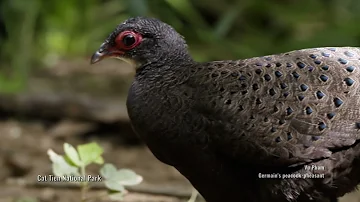
Germain's peacock pheasant #birds #nature #wildlife #wildlifephotography #videography #filmmaking
Germain's peacock-pheasant is a pheasant that is endemic to Indochina. The name commemorates the French colonial army's ...
Vu Pham Wildlife
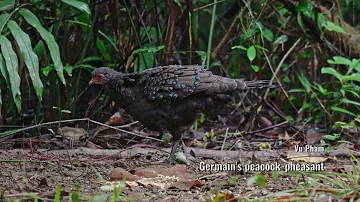
Germain's peacock-pheasant
Germain's peacock-pheasant is a pheasant that is endemic to Indochina. The name commemorates the French colonial army's ...
Vu Pham Wildlife
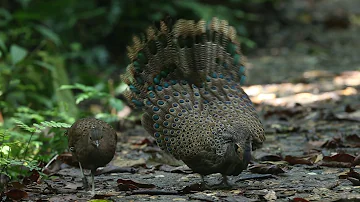
Mating time of the Malayan peacock-pheasant
Malaysia forester birding tour

Malayan peacock-pheasant
The Malayan peacock-pheasant also known as crested peacock-pheasant or Malaysian peacock-pheasant is critically ...
Fieldsports Channel

Mountain Peacock-pheasant facts 🐓 Rothschild's Peacock-pheasant 🦜Mirror Pheasant
birddocumentary mountain peacock-pheasant, documentary facts The mountain peacock-pheasant, also known as Rothschild's ...
Amazing Planet!

Mating time of the Mountain Peacock Pheasants
Mating time of the Mountain Peacock Pheasants.
Malaysia forester birding tour
🌍Habitat Information
The Malayan Peacock-pheasant typically inhabits Lowland tropical rainforest environments. Malayan Peacock-pheasants have adapted to their environments with specialized features and behaviors.
Primary Habitat:
Lowland tropical rainforest
More detailed habitat information will be available soon.
🛡️Conservation Status
The Malayan Peacock-pheasant is currently classified as Endangered. Conservation efforts are crucial for preserving this species for future generations.
Common Threats:
- 🏠Habitat loss and fragmentation
- 🌡️Climate change impacts
- 🎯Hunting and poaching
- 🏭Human-wildlife conflict
⚠️Threats & Conservation Challenges
The primary threat to the Malayan Peacock-pheasant is habitat loss due to deforestation for agriculture, logging, and infrastructure development across the Malay Peninsula. Its dependence on undisturbed lowland rainforest makes it highly sensitive to habitat fragmentation and degradation. Illegal hunting for food and the pet trade, although less common, further exacerbates population declines. The species is now largely restricted to isolated forest reserves, with an estimated population of fewer than 2,500 mature individuals and a continuing downward trend. Conservation challenges include enforcing protected area boundaries, preventing illegal logging, and restoring degraded habitats. Climate change and increased frequency of forest fires may pose additional long-term threats.
🔬Scientific Classification
Scientific Name
Polyplectron malacense
Classification Hierarchy
🔍 About Taxonomic Classification
Taxonomic classification is a hierarchical system used by scientists to classify and organize living organisms based on shared characteristics and evolutionary relationships.
The system moves from broad categories (Kingdom) to increasingly specific ones, with each animal's scientific name typically consisting of its Genus and species.
📝Community Notes
Share your observations and insights about the Malayan Peacock-pheasant with our community of wildlife enthusiasts.
Join Our Community
Sign in to share your observations and connect with fellow wildlife enthusiasts.
Sign In to ContributeNo community notes yet
Be the first to share your observations about the Malayan Peacock-pheasant!
Explore Malayan Peacock-pheasant
Select a tab above to learn more about this amazing animal.
📸Photo Gallery
No photos available for this animal yet.
🌟Discover More Wildlife
Continue your journey of discovery with more fascinating animals from our database
